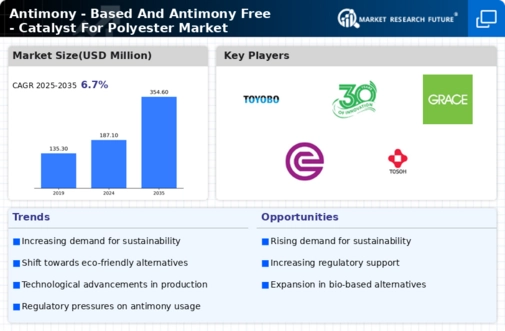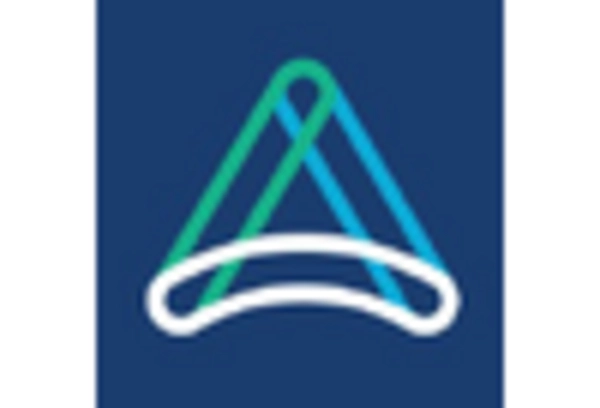Regulatory Pressure for Antimony Reduction
The Antimony - Based And Antimony Free - Catalyst For Polyester Market is experiencing heightened regulatory scrutiny aimed at reducing antimony usage due to its environmental and health concerns. Governments are increasingly implementing stringent regulations that limit the permissible levels of antimony in various applications. This regulatory pressure is driving manufacturers to seek alternatives, thereby boosting the demand for antimony-free catalysts. As a result, the market is witnessing a shift towards safer and more sustainable catalyst options. The anticipated growth in the antimony-free segment is projected to reach a market share of approximately 30 percent by 2026, indicating a significant transformation in the industry landscape.
Increased Investment in Sustainable Manufacturing
The Antimony - Based And Antimony Free - Catalyst For Polyester Market is witnessing a surge in investments directed towards sustainable manufacturing practices. Companies are increasingly recognizing the long-term benefits of adopting environmentally friendly processes, which include reduced waste and lower operational costs. This trend is further supported by government incentives and funding for green initiatives, encouraging manufacturers to transition towards antimony-free catalysts. As a result, the market is expected to see a significant increase in the adoption of sustainable practices, with estimates suggesting that investments in this area could exceed 1 billion dollars by 2027. This shift is likely to enhance the overall competitiveness of the industry.
Technological Advancements in Catalyst Development
Innovations in catalyst technology are playing a pivotal role in shaping the Antimony - Based And Antimony Free - Catalyst For Polyester Market. Recent advancements have led to the development of more efficient and effective catalysts that enhance the polymerization process. These technological improvements not only increase production efficiency but also reduce energy consumption, aligning with the industry's sustainability goals. The introduction of novel catalyst formulations is expected to drive market growth, with projections indicating a compound annual growth rate of around 5 percent over the next five years. This trend underscores the importance of continuous research and development in maintaining competitive advantage within the market.
Rising Consumer Preference for Eco-Friendly Products
Consumer awareness regarding environmental issues is significantly influencing the Antimony - Based And Antimony Free - Catalyst For Polyester Market. There is a growing preference for eco-friendly products, which is prompting manufacturers to adopt antimony-free catalysts in their production processes. This shift is not only driven by consumer demand but also by the need for brands to enhance their sustainability credentials. Market data suggests that approximately 60 percent of consumers are willing to pay a premium for products made with sustainable materials. Consequently, this trend is likely to propel the adoption of antimony-free catalysts, thereby reshaping the competitive dynamics of the industry.
The Antimony - Based And Antimony Free - Catalyst For Polyester Expansion
The demand for polyester products continues to rise, significantly impacting the Antimony - Based And Antimony Free - Catalyst For Polyester Market. As industries such as textiles, automotive, and packaging expand, the need for efficient catalysts becomes increasingly critical. The polyester market is projected to grow at a compound annual growth rate of approximately 6 percent over the next five years, which will, in turn, drive the demand for both antimony-based and antimony-free catalysts. This growth presents opportunities for manufacturers to innovate and diversify their product offerings, ensuring they meet the evolving needs of various sectors. The interplay between polyester demand and catalyst technology is likely to shape the future landscape of the industry.


















Leave a Comment